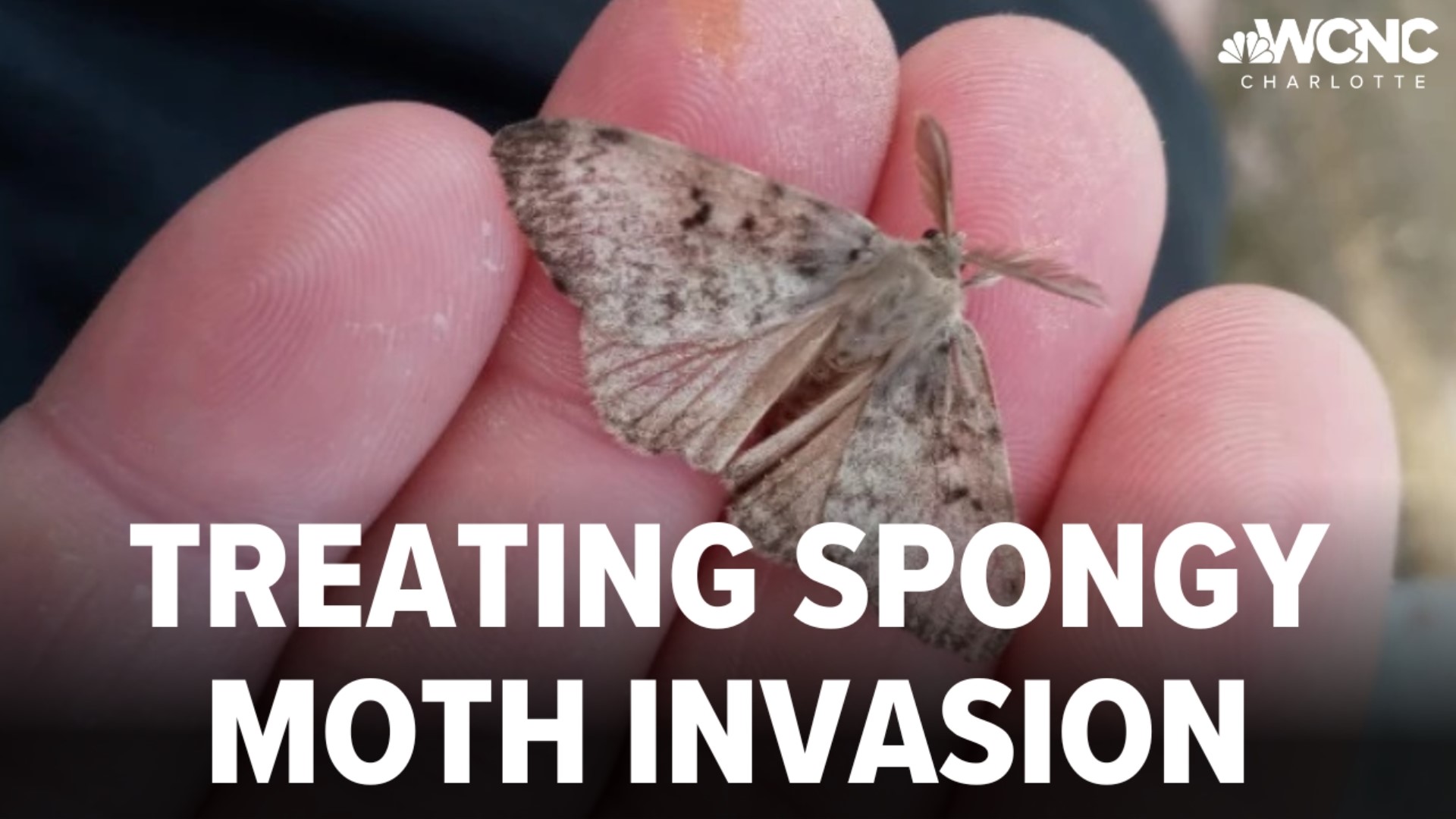AVERY COUNTY, N.C. — Spongy moths, previously known as gypsy moths, an invasive species that's existed in the Northeast since the late 1860s have expanded into portions of North Carolina, and experts worry the consequences could be fire for the environment.
Spongy moths aren't just invasive because they come in large numbers, although they do. A female spongy moth can lay 500 to 1,000 eggs per year.
The real problem? They feed off one of the most beautiful things in the Carolinas: trees. In fact, they feed off of over 300 species of hardwoods and shrubs, specifically oak trees.

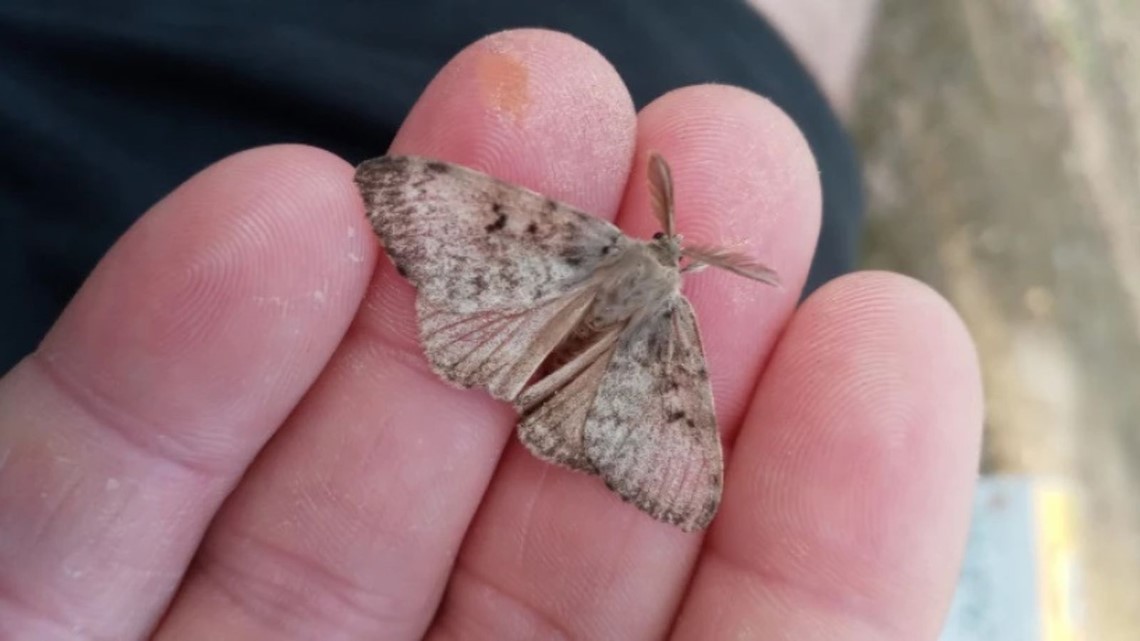
Sarah Lalk, the forest health research operations manager with the North Carolina Department of Agriculture and Consumer Services, says after a few years of stripping the foliage off of the trees, they can become so stressed they’ll die off.
She also says the USDA has estimated a $30 million dollar economic impact per year since the 1990s. But this could be an even worse sign for the Carolinas due to where we make a lot of our money.
“It's also a big problem for two of our major industries in the state,” Lalk said. “We have forestry. That's about 138,000 jobs in North Carolina and tourism, that's 197,000 jobs. That's about $62 billion between those two industries ... And both of them are heavily impacted by this issue."

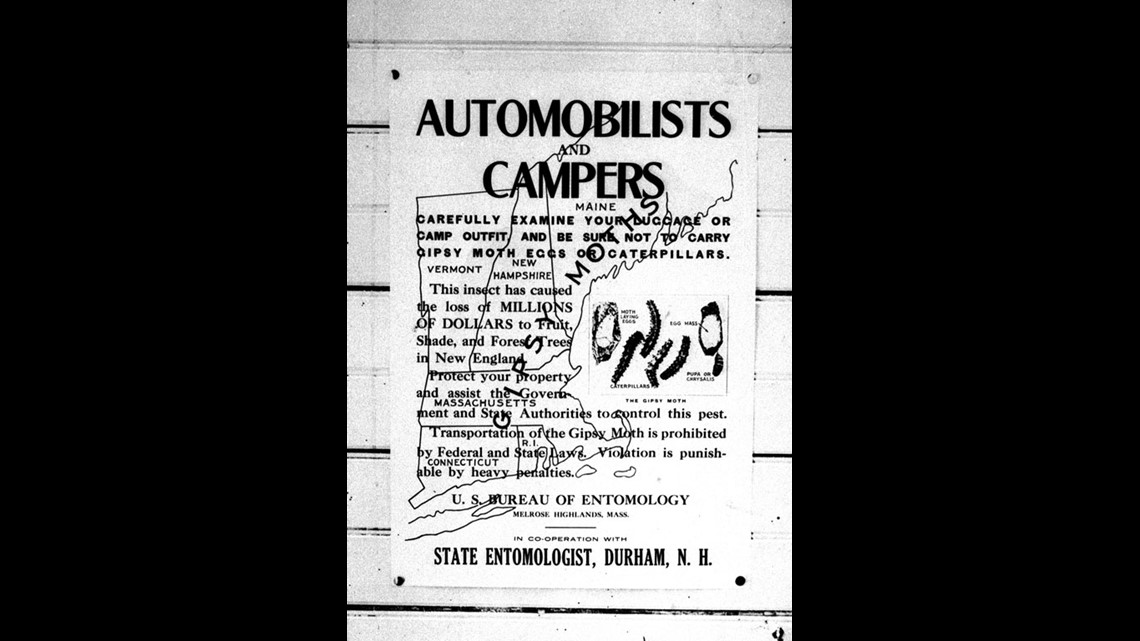
So, what do we do?
The Department of Agriculture — in North Carolina and other states all the way to Minnesota — uses a mating disruption to manage populations of spongy moths. They do not kill them.
This mating disruption (SPLAT GMO, which stands for gypsy moth organic, the old name for the moth) is an organic treatment made up of the mating pheromone, paraffin wax, vegetable oil and water. Lalk says it’s not harmful to the landscapes, people’s gardens, pets, or people themselves.
The droplets stick onto leaves and then dry, because it's wax. It breaks down over the summer, releasing the mating pheromone so male moths can't find females.
Eventually, they get confused and can't lay eggs. The wax is gone by the end of summer. Most spongy moths only live for about a year, according to Lalk. Essentially, they exist to procreate.

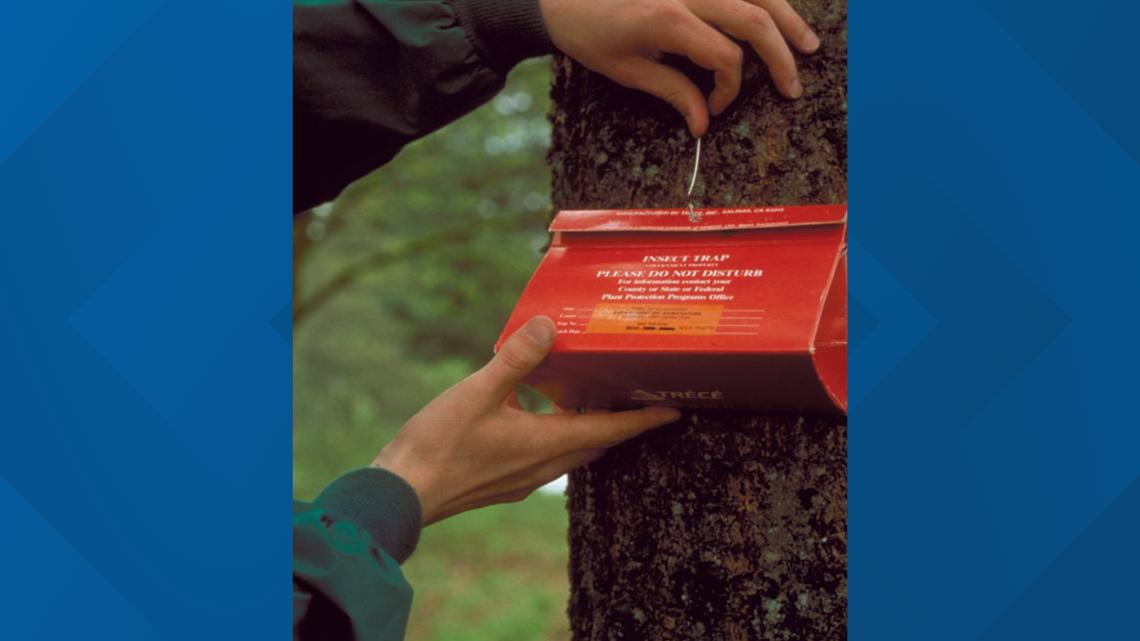
How do they decide where to do treatments?
According to Lalk, if you’ve ever seen the little orange triangle boxes across the state, these are used to track spongy moth populations.
They put out nearly 18,000 every year.
If they find male moths in these boxes, which they’re attracted to, they will know there’s a population building in the area. If the numbers increase steadily over time, Lalk says treatment will be scheduled.
How will I know if a treatment is scheduled near me?
There are treatments scheduled for portions of the Carolinas, including Grandfather Mountain on June 12.
You can click here to see if one is scheduled where you live or sign up to get more information on these treatment plans.
If you live in one of these areas, you may notice planes flying around. These planes release the mating disruption treatments.

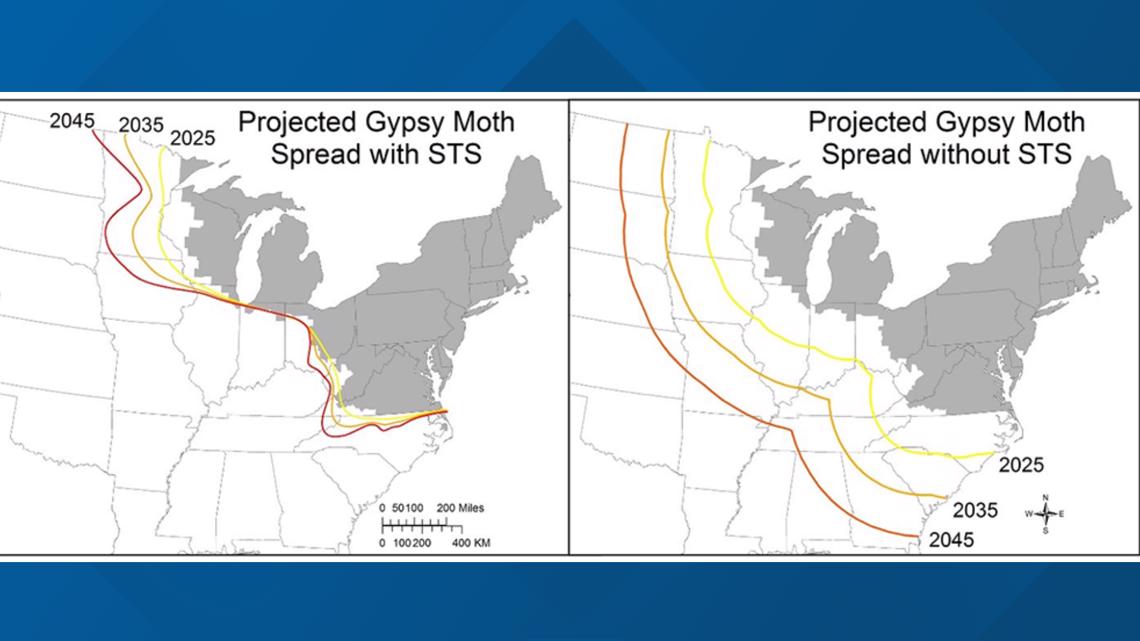
What happens if we do nothing?
According to data from Slow the Spread Foundation, if nothing was done, this invasive species would expand into all of North Carolina by 2025. All of South Carolina, half of Tennessee, and almost half of Georgia by 2035. Eventually, it would expand all of Tennessee, Georgia, and half of Alabama further into 2045.
Why did the name change from gypsy moth to spongy moth?
Lalk says the old name was seen as a bit of a slur. Spongy was born partially because in France, Canada and other areas, the eggs are known as ‘sponge juice’. Plus, the eggs do look like a massive orange sponge.


How did they get here?
Unlike many invasive insects, Lalk says we know how spongy moths got here. In 1869, Etienne Trouvelot of Massachusetts wanted to start his own silk industry.
While details of the story vary depending on where you look, Lalk says he brought over the wrong moths, even though the spongy moths were causing problems already in Europe.
They eventually escaped from a window of his house. No one thought anything of it until a few summers later when the forest behind his neighbor’s land was stripped of its leaves. And the rest is, as you say, history!
Contact Brittany Van Voorhees at bvanvoorhe@wcnc.com and follow her on Facebook, Twitter and Instagram.

